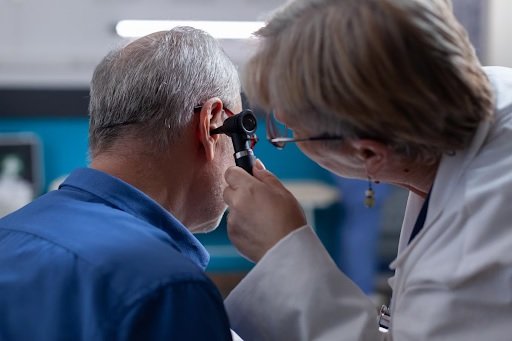
Unlock Your Confidence: Guide to Safe and Effective Plastic Surgery Procedures
Unlock a bold new you with our guide to safe plastic surgery procedures 🚀Get expert insight to boost confidence with success 🏆
Confidence and self-esteem are crucial as they influence how we perceive ourselves and interact with the world. They empower us to face challenges, embrace opportunities, and build healthier relationships.
Shifting focus, we’ll explore how plastic surgery can boost self-confidence by helping individuals achieve their desired appearance, thereby enhancing their sense of well-being and satisfaction with their image. For those considering such procedures, Shens Clinic – Plastic Surgery in Singapore offers a range of expert services to help individuals achieve their aesthetic goals.
Understanding Confidence and Self-Esteem
Self-esteem refers to one’s overall sense of self-worth or personal value. It’s crucial for mental health, influencing motivation and resilience, thereby shaping an individual’s ability to navigate life’s challenges effectively.
The link between physical appearance and self-esteem is significant; how individuals perceive their looks often impacts their confidence, influencing both interpersonal interactions and overall mental well-being.
Plastic surgery can enhance confidence by aligning physical appearance with personal ideals, leading to improved self-esteem. Such transformations help individuals feel more comfortable and assertive in both social interactions and professional environments.
Plastic Surgery: Overview and Misconceptions
Plastic surgery has ancient origins, with early practices traced back to India and Egypt. Significant advancements occurred during World War I, as pioneering techniques were developed to treat soldiers’ injuries.
Many believe plastic surgery is solely for cosmetic enhancement, but it also addresses medical issues like reconstruction after accidents or correcting congenital defects, highlighting its broader scope beyond aesthetic improvements.
Highlighting the importance of contemporary methods, this approach underscores their safety and effectiveness, ensuring patients experience optimal outcomes through rigorous standards and innovative techniques. This focus on reliability shapes advancements in medical practices today.
Safe Plastic Surgery: Essential Factors to Consider
Selecting a qualified surgeon is crucial for ensuring optimal medical outcomes. Thorough research guarantees that the surgeon possesses the necessary skills and experience, minimizes risks, and fosters confidence in receiving safe and effective treatment.
Grasping the process, potential hazards and advantages is crucial for making informed decisions. Knowing each step, possible complications, and positive outcomes ensures confidence and clarity when approaching complex situations or procedures.
The conversation about ensuring patient safety in plastic surgery focuses on implementing rigorous protocols, improving communication among medical staff, and emphasizing comprehensive preoperative assessments to prevent complications and enhance overall treatment outcomes.
Realistic expectations play a crucial role in achieving success, as they prevent disappointment, increase motivation through achievable goals, and enhance resilience by preparing individuals to navigate inevitable challenges with a pragmatic mindset.
Most Common and Effective Plastic Surgery Procedures
Evaluating the potential advantages and dangers of each procedure is critical, as it helps in making informed decisions by carefully weighing positive outcomes against possible negative impacts.
Life after Plastic Surgery: Recovery and Confidence Building
This concise guide covers essential post-operative care and recovery steps, including wound management, pain control, activity adjustments, medication adherence, diet modifications, follow-up appointments, and recognizing complications to ensure effective healing.
Plastic surgery can significantly enhance self-esteem and confidence by addressing physical insecurities, leading to improved body image and overall mental well-being, ultimately empowering individuals in their personal and professional lives.
Conclusion
The article highlights key points, including essential topics covered and critical findings from recent research, providing a comprehensive summary that emphasizes the most significant elements discussed throughout the text.
Safe and effective plastic surgery plays a crucial role in enhancing self-esteem and empowering individuals to feel more confident. By focusing on skilled procedures, people can achieve their desired appearance with higher safety standards.
If you’re contemplating plastic surgery, know that careful research and realistic expectations are vital. Make informed decisions, choose qualified professionals, and prioritize your well-being to ensure a positive and life-enhancing experience.
FAQs
Why is it called plastic surgery?
Plastic surgery derives its name from the Greek word “plastikos,” meaning to shape or mould. This term reflects the procedure’s goal of reshaping body tissues for reconstructive or cosmetic purposes.
What is exactly done in plastic surgery?
Plastic surgery involves reconstructing and reshaping the human body. Procedures correct deformities, enhance physical appearance or restore functionality. It covers a range from cosmetic enhancements to complex microsurgeries for medical recovery.
What are common plastic surgeries?
Common plastic surgeries include rhinoplasties (nose reshaping), liposuction, breast augmentations, facelifts, and tummy tucks. These procedures address aesthetic concerns or reconstructive needs to enhance appearance and boost self-confidence in individuals.
What is the difference between cosmetic surgery and plastic surgery?
Cosmetic surgery aims to enhance appearance through elective procedures, focusing on aesthetics. Plastic surgery reconstructs defects resulting from accidents, birth disorders, or medical conditions, prioritizing functionality and form rather than solely looks.


